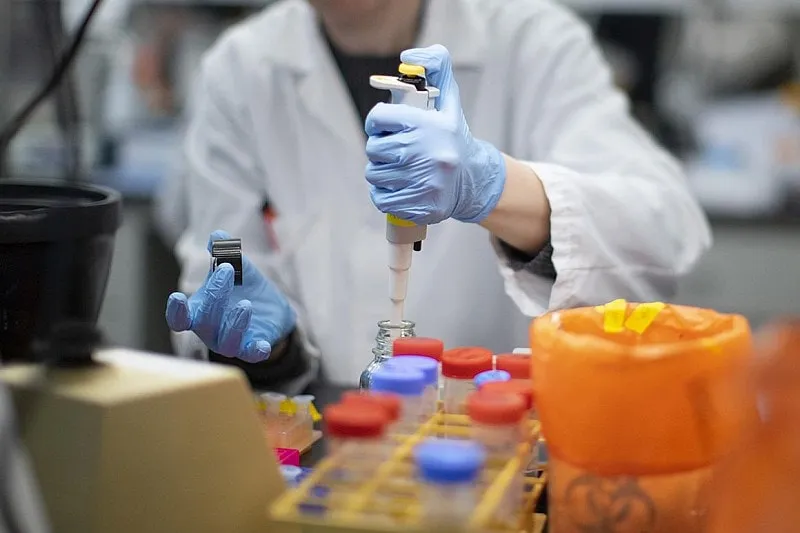Anemia, a condition where the blood lacks sufficient healthy red blood cells (RBCs), can have major implications for individuals with heart disease. But how exactly are anemia and cardiovascular health connected? Unravelling this relationship is key to improving prevention and treatment approaches. Emerging non-invasive technology that screens for anemia could offer new pain-free monitoring options to protect heart patients.
Red blood cells have the critical job of carrying oxygen inhaled from the lungs to every part of the body. Oxygen is life-sustaining – our organs need it to function properly. When RBC-Levels drop too low, this oxygen-circulation system is impaired.
The heart, as our vital core organ, is especially sensitive to the reduced oxygen supply, resulting from anemia. Even mild deficits can disrupt the heart’s oxygenation and lead to complications. Therefore, understanding exactly how anemia stresses the heart is crucial.
Straining the Heart.
Most directly, having inadequate RBCs means less oxygen reaches the heart muscle itself. Being starved of its main fuel forces the heart to work harder to try to meet the body’s high demand for nourishment. This strain causes the heart’s muscular walls to enlarge and pump more forcefully to compensate. But over time, this chronic overexertion remodels the structure and function of the heart in detrimental ways.
Heart muscle tissue may deteriorate. The coordinated electrical signals that control the heart rate can become disrupted, resulting in irregular rhythm. The chambers enlarge and the heart valves thicken. Ultimately this often leads to heart failure, if anemia persists unchecked.
Multiple Mechanisms of Harm
Beyond just oxygen deprivation, research now shows, anemia can worsen heart problems through other mechanisms as well. Iron deficiency is one of the most common causes of anemia. Having low iron independently promotes inflammation and increased oxidative stress throughout the body. This accelerates dangerous atherosclerotic plaque buildup in the arteries supplying blood to the heart.
Additionally, experts suggest anemia impairs the heart’s ability to respond appropriately to stress hormones released during illness. This hampers the body’s capacity to adjust to circulatory challenges. The multifaceted impacts of anemia create a risky perfect storm for individuals coping with pre-existing cardiac conditions. This helps explain why heart patients who develop anemia often decline rapidly.
The Need for Easy Monitoring
Considering these grave consequences, monitoring for anemia is especially important in those with heart failure. However, frequent testing is challenging in these fragile patients. Blood draws require needle pricks, causing discomfort and anxiety. For sensitive heart patients, the stress itself could pose health risks. Yet avoiding necessary blood tests leaves doctors blind to brewing issues.
This Catch-22 highlights the need for non-invasive technology to detect declining hemoglobin levels painlessly. New portable devices use a simple finger sensor to check for anemia in seconds, without puncturing skin.
Advanced optics and predictive algorithms deliver instant lab-accurate results. Easy self-monitoring at home could free patients from traumatic blood draws while supporting proactive care.
The Promise of Pain-free Testing
For instance, the latest generation of non-invasive hemoglobin-testing devices allow people with heart conditions to stay vigilant about their RBC-levels with zero discomfort. Therefore, the wider availability of such testing solutions will be a game changer, especially paired with lifestyle adjustment and nutrition therapies. Catching anemia early, before debilitating symptoms occur, give doctors the lead time to treat the root cause. Addressing factors like iron or nutrient deficiency proactively preserves heart health.
The key is recognizing the intimate connection between healthy blood and a healthy heart. Non-invasive screening facilitates near-effortless monitoring, meaning no patients have to suffer needle-sticks to safeguard their fragile cardiac status. This proactive approach is at the core of patient-centered care.
Bottomline
Development of non-invasive testing devices continues at a rapid pace, thanks to expanded consumer and medical demand. Further advancements in accuracy, portability, and ease of use are on the horizon.
Beyond hemoglobin measurement, exciting research is exploring non-invasive ways to assess iron levels and other markers relevant to anemia screening. As technology removes more barriers to pain-free testing, comprehensive and convenient blood health monitoring will become the norm.
The path forward is clear – leveraging innovation to uncover health insights without hardship or harm. For the millions of individuals coping with heart disease, this new era of patient-empowering technology cannot come soon enough.
From Iron to Arteries: Demystifying the Connection Between Anemia and Cardiovascular Health
Partha Pratim Das Mahapatra, CEO and Founder, EzeRx























